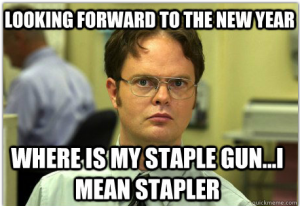As the month of August continues to march forward, the dawn of a new school year lies ahead. This year, one of my personal goals is to really push the envelope with digital literacy. So, naturally, I’ve been doing some 21st century research: looking at YouTube, visiting blogs, and looking at infographics. I’ve stumbled upon a great way of picturing what digital literacy looks like in the 21st century.
Doug Belshaw’s work is best summarized in this YouTube: [youtube]http://www.youtube.com/watch?v=A8yQPoTcZ78[/youtube]
He outlines the evolution of the meaning of digital literacy, and then does something very important. He makes it plural: digital literacies. These are ways of communicating, collecting, cogitating, and contributing to our world via digital tools. These run counter to a previous idea of elegant consumption, in that digital literacies happen in no specific order or hierarchy. They are located in immediate context, and social interaction.
In his book “The Essential Elements of Digital Literacy” he outlines key points about what it means to teach, apply and understand the world around us…AND, most importantly, how to contribute to it. They are summarized below from “The Search Principle Blog“:
- Cultural – We need to pay attention to the culture in which the literacies are situated
- Cognitive – We can’t just consider the procedural ways in which we use devices and programs. It’s the way we think when we’re using them
- Constructive – We can’t be passive consumers of technology/information. We should strive to use digital tools in reflective and appropriate ways
- Communicative – Digital tools and power structures change the way we communicate. An element of digital literacy is how we take command of that structure and use it to communicate effectively and contribute meaningfully
- Confident – in order to be a proficient user of technology, one must have the courage and confidence to dive into the unknown, take risks, make mistakes, and display confidence when “messing around” with new tools
- Creative – from his research, Doug says “…..the creative adoption of new technology requires teachers who are willing to take risks… a prescriptive curriculum, routine practices… and a tight target-setting regime, is unlikely to be helpful.” Conlon & Simpson (2003)
- Critical – Digital literacy involves an understanding of how to deal with hyperspace and hypertext and understanding it’s “not entirely read or spoken.” Can we critically evaluate the technologies we’re using?
- Civic – many schools are beginning to embrace technology to improve our lives and the lives of others in the world
Throughout his talk Doug emphasizes that these operate not individually, not in harmony, but rather they operate as the user interacts with the digital tools and content. He emphasizes the REMIX of content to create nuances of meaning and nuanced communication. I love it.
I think that this concept can really speak to students, and allow them to express themselves in truly unique and effective ways. Making a meme of shakespeare’s characters in conflict with “success baby”, or make LOLcats portray the crux of a characters dilemma. There is a lot of things that we could do with this as teachers, innovators and 21st century learners.
I’m really looking forward to this new year!
